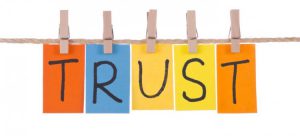Your best friend tells you that GMOs are in your food, and they are bad for the environment. You see an article posted by Dr. Oz saying that you should try this new life-changing diet. These are just some of the “tips” that consumers see and hear on a daily basis on what and what not to do when it comes to food choices. But how are consumers supposed to know what is reliable with all of the many sources and outlets in society today? This was the topic of a webinar with the Center for Food Integrity that seeks to gain consumer trust in the food system to provide the knowledge that is desperately needed. With the many nutrition “experts” in the media, bad science, and buzzwords everywhere, consumers are fearful of who they can actually trust.
Every year, the Center for Food Integrity conducts a survey to see what consumers’ thoughts and actions are when it comes to food choices. From their most recent survey, it was found that consumers make more of their food choices based on shared values from relationships with others rather than received facts. This emphasizes the influence of trust, and therefore the importance of the food systems shifting their approach to shared values to connect with the consumer. Consumers do not feel engaged to the food system and are seeking transparency and the need to be heard. Of course facts do not need to be abandoned all together, but the nutrition and health professionals should be leading the facts with shared values to be communicated effectively. The goal of communication should not be to persuade or educate, but rather to embrace the skepticism. Sarah Downs, a registered dietitian that led part of the webinar, provided a helpful tool for communicating with individuals: “listen, ask, share”. She believes in listening without judgment and listening to a person’s values first, then asking questions about thoughts and beliefs. Everyone has different values, whether it is difficulty finding affordable food, being fearful of food recalls, or wanting to eat organic foods, therefore listening is key to understanding. Sharing should include sharing your own perspective and values with an individual, so a connection can be bridged together. Whether it is family, integrity, or quality, everyone has values that impact their food choices and beliefs.
This information is especially useful for dietitians, clinicians, and other professionals in the nutrition field when having conversations with clients about food choices. Dietitians should also use their expertise through social media as well since that seems to be the main outlet consumers receive information. For more information on this topic, FoodIntegrity.org and BestFoodFacts.org are great resources for nutrition professionals or for the everyday consumer.
